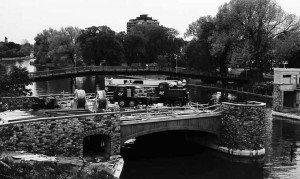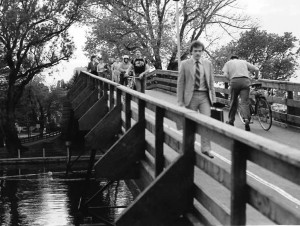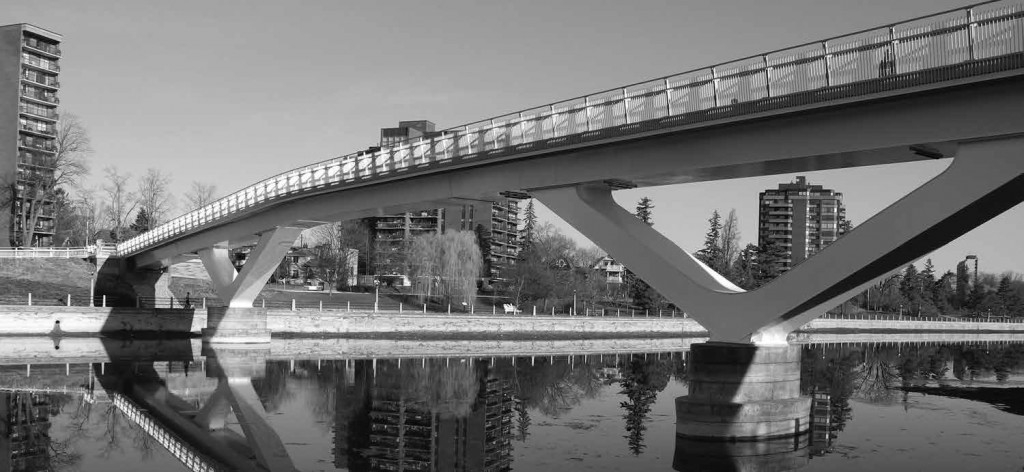
The majestic span of the Flora Footbridge has brought dramatic new design to the infrastructure of Old Ottawa East.
John Dance
Photos by John Dance
As one of the five communities that constitute Ottawa’s “Rideau Island”, the land between the Rideau Canal and the river north of Hog’s Back, Old Ottawa East (OOE) is linked to its neighbours by seven bridges, some of them with fascinating histories.
Three of these bridges span the Rideau Canal and the others are over the Rideau River. Two were built more than a century ago and one, Flora, was opened just last year, as readers of The Mainstreeter well know.
The most famous of the bridges is Pretoria, designed by Joseph Baermann Strauss, who was later chief engineer of the famous Golden Gate Bridge in San Francisco.
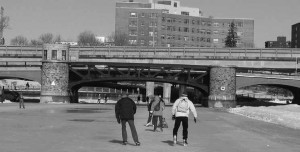
Originally built in 1917, the present day Pretoria Bridge is actually a reconstruction that was undertaken by the Regional Municipality of Ottawa-Carleton in 1981 using the original design and stones. A temporary wooden footbridge located just to the north of the bridge and visible in the top two photos was constructed and was well used. However, despite requests from residents to relocate the wooden bridge farther south along the canal, it was taken down after the bridge was completed and the wood reused elsewhere. Today, Pretoria Bridge stands proudly as a landmark and a gateway into and out of Old Ottawa East, much used and enjoyed by residents on both sides of the canal.
The Pretoria Bridge we use today looks very much like the structure that was first built in 1917 but, in fact, that original bridge was demolished, and a new bridge based on the original design was built and opened in 1981.
In 1967, the deteriorated condition of the original bridge led the Regional Municipality of Ottawa-Carleton to consider options.
“In keeping with the regional government’s plan for high-speed arterial roadways, consultants recommended replacing the Pretoria Avenue Bridge with two new high-level spans, one on each side of the Queensway,” says Heritage Ottawa’s website. “The southern span would have cut through the heart of the Glebe by way of Clegg Street.”
Residents, as well as the predecessor of Heritage Ottawa, pushed back and, in the end, the municipality agreed to rebuild the bridge using the design and the stones from the original bridge.
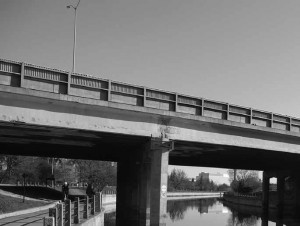
To the north of Pretoria Bridge stands the Queensway Bridge over the canal, which will undergo considerable structural work over the next number of years.
During the rebuilding, a simple but well-used temporary footbridge was also erected. The community asked that, with the re-opening of Pretoria, the temporary footbridge be relocated farther south, but the municipality had other plans for using the bridge’s structural members. All that remains are the circular bases for the bridge’s piers which are visible when the Canal is lowered in the fall.
OOE’s oldest bridge is the Canadian Pacific Railway Rideau River Bridge which is now a footbridge east of the Lees Avenue campus of the University of Ottawa. Built in 1898, by 1958, it was one of five bridges in this area of the river. Two others were also railway bridges – but they have now been demolished with no traces left behind. The fourth bridge was the Hurdman bridge which was the primary road connection across the river south of Montreal Road. This bridge was also demolished many years ago. And the fifth bridge in this area is the Constable J. Robert Maki Bridge, which is otherwise known as the 417 Rideau River Bridge.
In a recent fascinating article, local architect and heritage expert Barry Padolsky examines the design of the CPR Bridge… He says, “On my morning walks along the Rideau River, I discovered the fact that the bridge possesses an extraordinarily beautiful curve.” He notes, “I always assumed that it was straight. Yet when you squint along its axis, a most subtle curve is revealed, creating a visual liveliness that Ictinus and Callicrates, the architects of the Parthenon well understood in 438 BC.”
“Having discovered the ‘curve’ I became curious about its radius,” he continues. “I revisited my forgotten high school geometry lessons. Using the ‘intersecting chords theorem’ I calculated that the radius was approximately 1.6 kilometres away, somewhere near the bowling alley on McArthur Street in Vanier. Unearthing this trivial fact was almost as satisfying as experiencing the epiphany of the curve.”
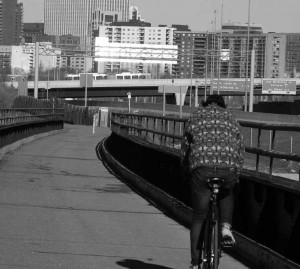
OOE’s oldest bridge is the Canadian Pacific Railway Rideau River Bridge, which is now a footbridge east of the Lees Avenue campus of the University of Ottawa, was built in 1898.
The other bridges of Old Ottawa East – the Queensway bridge over the Canal, the LRT bridge, McIlraith connecting Smyth Avenue and Main Street, and Flora – don’t have lengthy histories but they are major engineering accomplishments and make it possible to readily get to, out of and through Old Ottawa East by rail, car, foot and a bicycle.
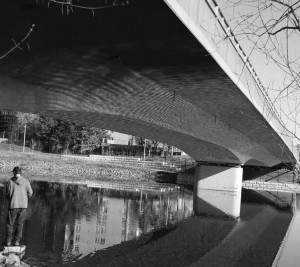
The concrete LRT Bridge that spans the river just west of uOttawa was originally used by cars but now supports the rapid transit line.
In the future, OOE is likely to be the most “bridged” community in the city. The city still wants to build the Alta Vista Transportation Corridor bridge over the river and through the Springhurst green space. And the Hurdman Transit Oriented Development plan proposes two new footbridges over the river, including one at the foot of Clegg Street, a proposal that the OOE Community Association recently endorsed.
